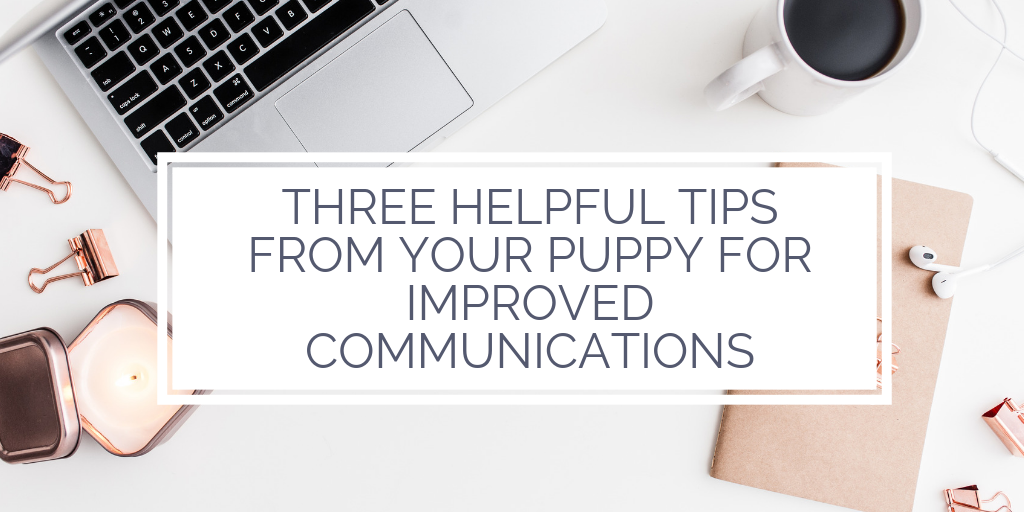Three helpful tips from your puppy for improved communications
Everyone in our house has been really excited for the past couple of weeks as we’ve been preparing to bring a new puppy home. Henry, who is black Labrador, finally arrived at the end of September and the fun began!
Having a puppy is a lot like having a new baby. Your time suddenly revolves around this little ball of fluff. Has he had enough to eat? Does he need to rest? Has he been to the loo? Does he need to go again? And since he can’t leave the house until he’s fully vaccinated (around 6 weeks in our case), establishing a good routine early on is key for everyone’s sanity!
The same is true of all good communications. Getting a good routine established is the key to success. Here are three things I’ve learned during my first few weeks with Henry that can be applied easily to get your communications on the right track.
1. Cadence
Like most new puppy parents, the first thing I wanted to do when Henry arrived was to get him housetrained. There are two tricks to successful housetraining: a crate and a routine. The crate is Henry’s den—it’s filled with blankets and toys—so he’s motivated to keep it clean. Every time Henry leaves his crate, he is taken into the garden to do what he needs to do. The same thing happens after he’s eaten. In other words, we’ve established a clear routine so Henry knows what to expect when.
Take a similar approach with your communications. Start by creating a simple editorial plan that plots out when you’re going to publish what content. Once you’ve done that, think about how you’re going to promote the content you publish—after all, there’s no point writing an amazing blog if no one knows about it. Creating a routine for developing, publishing and promoting your content will help your audience get to know, like and trust you—bringing them one step closer to buying from you.
2. Clarity
Puppies respond to words of one syllable They don’t respond to long phrases or loud voices. Language needs to be clear, instructions need to be firm and they need to be repeated—often!
It’s pretty much the same when you’re communicating in your business. Choose your words carefully and use the same simple, clear language that’s appropriate to your audience. Avoid jargon, particularly if you’re communicating with a global audience, and remember, if your communications are unclear, your audience won’t stick around for long.
Follow the KISS rule (keep it simple stupid) and apply it liberally to your business writing!
3. Consistency
It can be very easy to confuse a puppy when you’re asking him/her to do something new. The key here is to use the same word consistently to describe the same action—for example, ‘off’ when you want him to get down from the kitchen bench or ‘down’ when you want him to lie down at your feet. Developing consistency helps Henry learn new instructions and understand what we expect of him.
The first step to creating consistency in your communications is to know your audience. The better you know them, the easier you’ll find it to develop content that appeals to them. The second is to develop a set of key messages. It doesn’t have to be a long list—two or three will do—but once you have them, it will make it so much easy for anyone writing content for your business—whether that’s you or someone you hire—to talk about it in a consistent way.
Following these three easy tips will make your communications easier to manage and, of course, your puppy better behaved!

